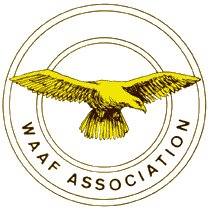We were kept very busy with
lectures on electronics, circuitry, detectors and amplifiers, transmitters
and receivers, transmission line theory and antennea. It was quite a
difficult course for non-physicists. They had only been able to find
perhaps half a dozen women with physics degrees, the chemists and botanists
worked hard at the exacting course, at the end of which there was to
be an exam, after which we would be posted to operational duties.
Being at the Grand Hotel
we used to have informal dancing on Saturday nights called 'hops' and
here we often met the young men from TRE. They were very interesting
people, although their style of dress was somewhat bizarre with their
tweed jackets with leather patches on the elbows and brouges on their
feet. A few had old cars with long narrow bonnets in which we were sometimes
driven around when they had petrol. It was at one of these 'hops' that
I first met John Adams, my future husband. He helped me a little to
master transmission theory and I must have done ratehr well in the exams
as after a brief stay at Stanmore, 60 Group Headquaters, I was posted
back to Worth Matravers to lecture at Forres School. Most of the other
members of the course went to Wing Headquaters to keep an eye on the
operations of a group of CH stations. We were all promoted to the rank
of Flight Officer.
I was to help on a course
of RADAR supervisors run by two civilians, John Whitehouse and Johnny
Clegg. These were courses for chosen RAF and WAAF Radar personnel, often
non-commissioned officers who had been in charge of operational 'watches'.
I soon found out the calibre of these people coming from all walks of
civilian life. You would find secretaries and hairdressers, soliciters
and clergymen, all working together and keen on their jobs. They were
splendid and spent the time at the school working very hard indeed at
aerial theory, counteracting jamming, identification of aircraft, estimation
of number, and enough electronic theory to know when the transmitter
or receiver needed attention. Some evenings we had to lock them out
of the classrooms to make them take a break from work. They all realised
the importance of their work in giving advance warning of air raids
to both civilian and RAF flying personnel and they worked with a remarkable
will to suceed. They were usually rewarded for their labour for, if
they passed the course, and after a dreaded interview with Squadron
Leader Scarf who decided whether or not they made the grade, they were
commissioned before being sent back to man all the CH or CHL stations
now covering the coast from Firth of Tay to Lands End. The CHL stations
had been brought into service to spot the low flying aircraft that had
been stealing in, flying low and undetected, by the CH stations.
Forres School continued to
grow as more and more courses were necessary. J Radcliffe left and Len
Huxley became the new Director. Soon there were courses for new entrants
to TRE mechanics courses, courses for supervisors on CHL stations and
for Ground Controlled Interception stations. I eventually took over
the supervisors course and later the CHL and GCI courses. We wrote an
instruction manual based on the supervisors course which was studied
by all RADAR personnel on ground stations and was known as the operators
'bible'.
It is difficult to stress
too highly the immense importance of TRE and its immeasurable contribution
to the war effort. It was, therefore, not suprising that our intelligence
services received evidence that a raid on TRE and Worth Matravers was
imminent. We had already experienced many air raid warnings. The army
sent troops to protect the area and TRE was evacuated to Malvern School,
which moved for the second time to Harrow. Swanage was badly bombed
days after the evacuation and my first billet near the station received
a direct hit.


![]()


